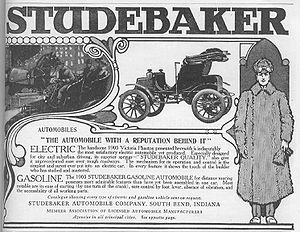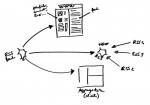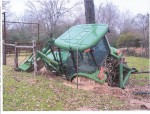Have you watched TV lately? It’s almost Memorial Day weekend here in the US and the airwaves are full of ads from large businesses promoting big sales. The department stores, the appliance stores, and the car dealers are all running non-stop ads shouting at people to shop now!
It seems every big business is marketing themselves the same way: buy now! low low prices! Are you tempted to market your small business the same way?
The trouble with those ads is that it’s kind of hard to tell one from the other. The car ads are especially bad. They tend to fall into one of two categories.
Look at us!
The first big business ad approach is what I call “isn’t our car pretty” ads. They tend to feature the car perched on a mountain. Or, driving down a twisty road. They sometimes talk about mileage or horsepower, or “best-in-class” accolades. These are the big business branding ads.
We have experience!
The local dealer ads are a bit different. They star the owner, or sometimes, what appears to be his daughter (not a professional actor). They usually spend the entire ad talking about how long they’ve been in business, or their great service, and great prices. Sometimes, they shout (this is New York, after all).
I call these the “me! me! me!” ads.
Either way, they all tend to blend into each other. You really can’t tell the Honda dealer ad from the Lexus dealer ad or the Ford dealer ad. The only difference is the strength of the “New Yawk” accent. It would be easy to switch them around, without noticing a change.
Generic isn’t remarkable
Small business marketers often do this too. The marketing all looks pretty much the same. You could swap the logos on their web sites and not notice much of a difference between business A and business B. They fail the remarkability test.
Be memorable, not broken
Back to the car dealers for a moment. What if, instead of the same old, boring, interchangeable ads, they decided to do something a bit different. Something that would be memorable, rather than dull and “broken.”
And involve the viewers, rather than encouraging them to hit the mute button. I don’t know about you, but I can find the mute button without looking. And it’s the most worn-out button on the remote.
Smart small business marketers tell a story instead
All businesses need stories. Stories and emotions are what really sell people, not shouting, or ‘rational’ arguments, or long lists of features.
There are so many stories associated with buying cars. The first car you ever bought. How excited you were. Maybe a little nervous too. It seemed like such a grown-up thing to do.
Imagine if the car dealer showed a college grad buying her first car. Saving her money, going in to the dealer, choosing the car, and the joy on her face when she bought it.
Or, what about a couple buying a bigger car because they’re going to be parents (and need more space). Put it that way, and the ad practically writes itself.
Much more interesting than yelling about years in business or big discounts if you buy a car before next Tuesday.
You can do this too
Take another look at your own marketing. Is it generic? Or is it memorable? If it’s generic, do you have stories to tell? They can be your own stories of success, or even better, your clients’ success stories.
You could share the story of how your product design skills turned someone’s dream of selling the ultimate tomato slicer into reality.
Or, how your ghostwriting helped an all-star athlete rocket to the top of the bestseller lists.
Or, even the “$75,000,000 hello” (a true story).
What stories can you tell?





